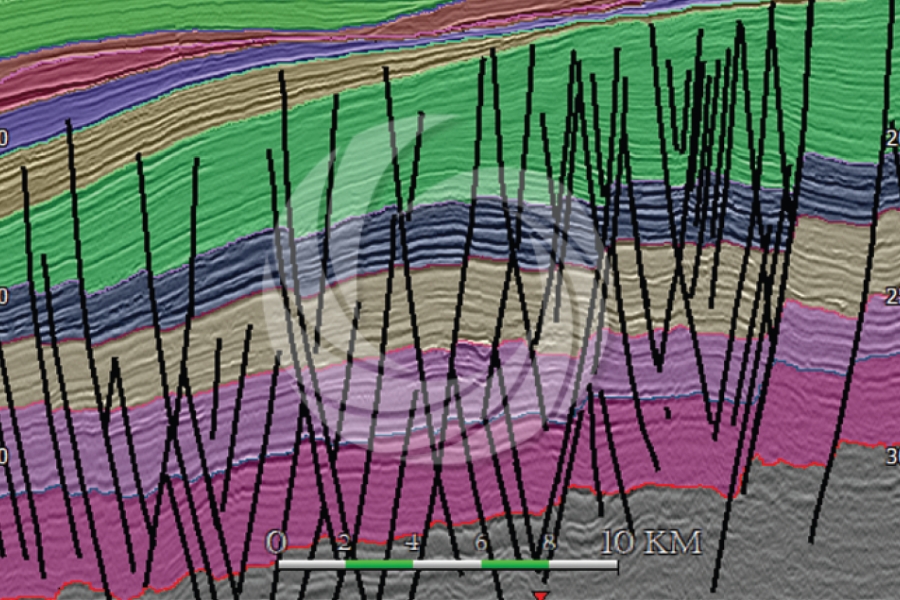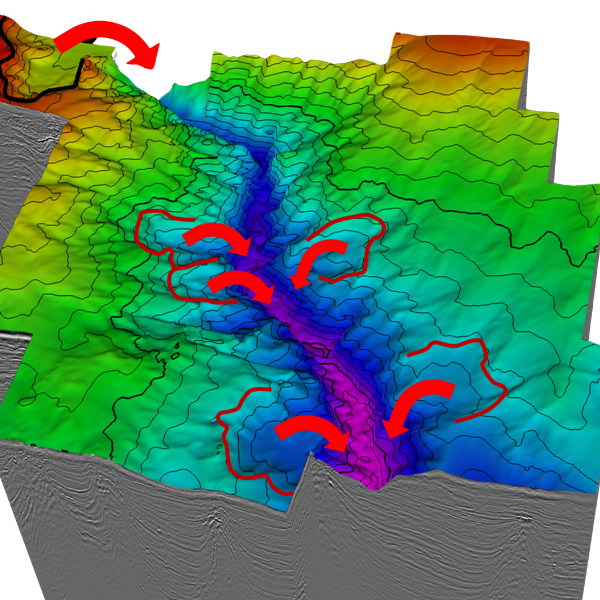GEOLOGICAL RECONAISSANCE
CASE STUDY: EXMOUTH SUB-BASIN

Automation-assisted techniques for fault extraction, horizon tracking, RGT modelling and stratal slicing significantly speed-up high resolution geological reconnaissance.
CASE STUDY AT A GLANCE

LOCATION
Carnarvon Basin, Offshore Australia

SURFACE AREA
900 KM2

AGE OF SEDIMENT
Jurassic & Cretaceous

GEOLOGICAL CONTEXT
Intra-cratonic rifting system with multiphase tectonic history

DEPOSITIONAL ENV.
Deep marine (Source: Dingo Fm, Reservoir: Dupuy Fm), Deltaic (Barrow Gp)

MAIN CHALLENGES
Faulted deposits
LOCATION
The Exmouth Sub-basin, located off the northwest coast of Australia, is part of the Northern Carnarvon Basin—an area known for its rich hydrocarbon potential and complex tectonic history.
AUTHOR

Nicolas Daynac
Advisor - Principal Geoscientist - Technical Excellence
SYNOPSIS
The Exmouth Sub-basin contains significant thicknesses of Upper Jurassic Dingo Claystone, which constitutes the principal hydrocarbon source facies in the region. It has undergone a complex tectonic history, with a multiphase uplift, erosion, inversion, tilting and charge history.
This case study highlights a hybrid interpretation workflow applied to the Exmouth Sub-basin, integrating machine automation with geoscientist input to streamline geological reconnaissance. The approach enables rapid fault extraction, stratigraphic modeling, and play generation, focusing on Jurassic-age deposits with complex tectonic histories.
KEY TOPICS COVERED
- Fault extraction from seismic amplitudes
- RGT modeling framework from seismic reflections
- Geological reconnaissance and play generation
- Wheeler transform and key isochrone delineation

Horizon tracking and correlations

RGT modeling

Key surface delineation – structural domain
WANT TO DIVE DEEPER? DOWNLOAD THE FULL CASE STUDY BELOW!






